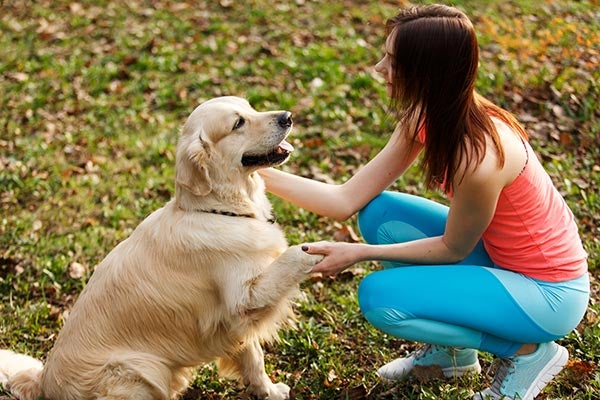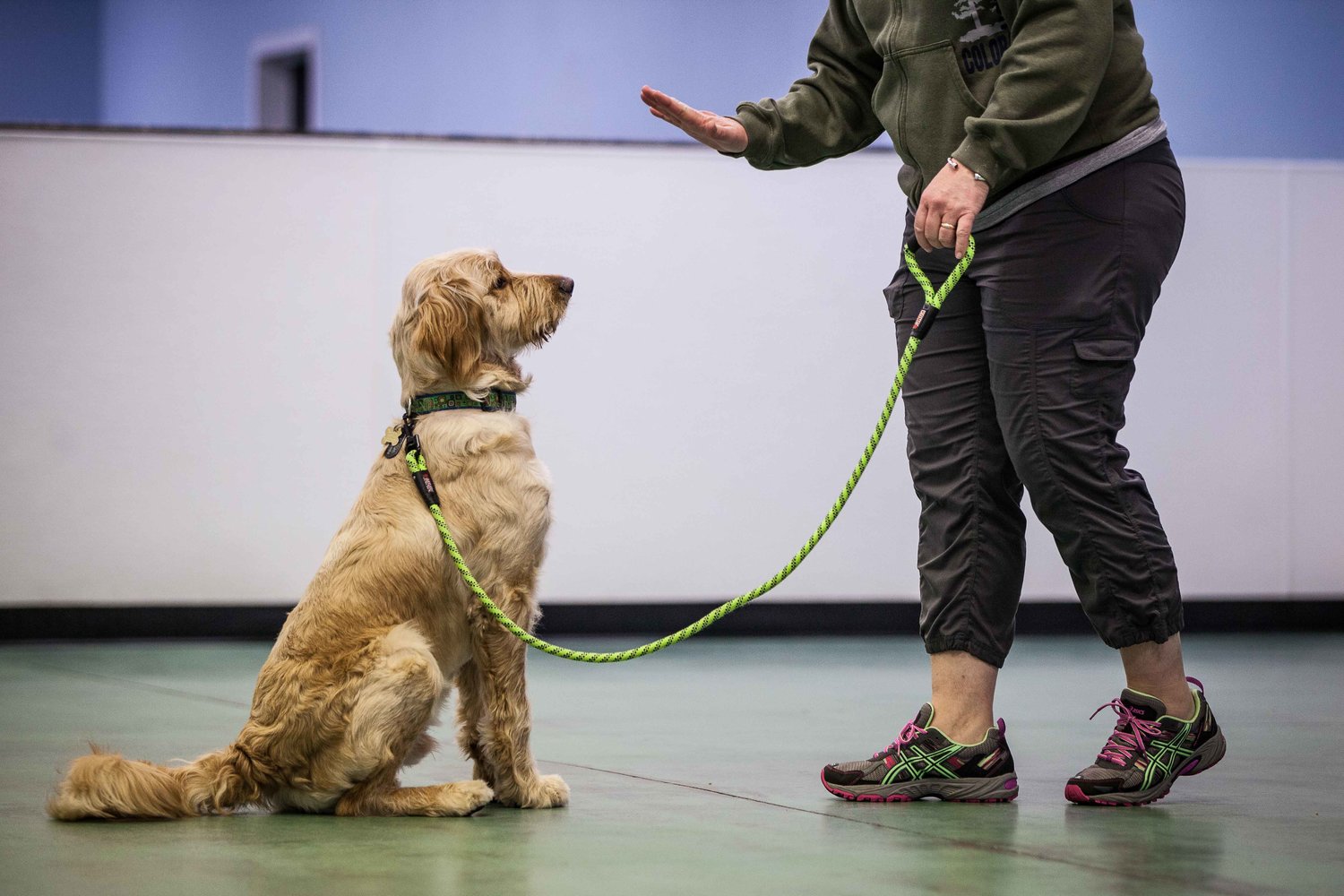Top Dog Educating Techniques Every Proprietor Need To Know

Favorable Reinforcement Methods
Utilizing positive reinforcement techniques is vital for reliable dog training, as it cultivates a relying on bond in between the trainer and the dog. This technique concentrates on fulfilling preferable actions as opposed to punishing undesirable ones, creating an environment helpful to discovering. Rewards can include deals with, appreciation, or playtime, which encourage canines to repeat the behaviors that make them these rewards.

Furthermore, this approach enhances the pet dog's excitement for training sessions. They are much more involved and responsive when canines connect training with positive experiences. Dog training. Beyond prompt habits adjustment, favorable support motivates a collective partnership between the canine and trainer, reducing anxiousness and worry
To maximize effectiveness, it is important to provide incentives without delay, ensuring the dog connects the habits with the support. Essentially, favorable reinforcement techniques not only produce better-trained pets but likewise advertise a harmonious partnership between pet and owner.
Clicker Training Method
The remote control training technique is a highly effective technique that builds upon the concepts of positive support by adding a distinctive audio to mark wanted actions. This method utilizes a small portable tool that generates a clicking audio, allowing trainers to connect with their pets in a clear and prompt fashion. When a pet dog does a habits that the proprietor wishes to motivate, the remote control is turned on, complied with by a benefit, normally in the type of treats or praise.
The trick to successful clicker training depends on consistency and timing. It is vital to click at the precise moment the wanted habits happens, making certain that the pet dog connects the sound with the activity and the subsequent benefit. This method not just improves communication yet also promotes a more powerful bond in between the proprietor and the pet dog, as it motivates interaction and communication during training sessions.
Clicker training can be used to a variety of actions and commands, from fundamental obedience to more intricate methods. Its versatility and effectiveness make it a favored strategy among professional fitness instructors and family pet owners alike, leading the way for a responsive and well-trained canine companion.
Chain Training Fundamentals
Efficient chain training is important for making sure a risk-free and pleasurable strolling experience for both pets and their proprietors. A flat collar may work for some pet dogs, while others might profit from a harness that decreases pulling.
Present your pet to the chain progressively, allowing them to explore it in a comfortable atmosphere. Technique loose-leash strolling once they are accustomed. This involves gratifying your canine for walking next to you instead of pulling ahead. Use treats and praise to strengthen preferred explanation behavior, and be certain to continue to be tranquil and assertive.
If your pet starts to pull, quit strolling instantly. Wait until they go back to your side prior to resuming. This teaches them that pulling does not bring about progress. Furthermore, technique various strolling settings to aid your dog adjust to disturbances.
Normal technique will certainly solidify your dog's understanding of leash rules. Bear in mind that leash training is a recurring process; persistence and uniformity will certainly produce the ideal outcomes, promoting a positive experience for both you and your canine buddy.
Socializing Approaches
Socialization is an important facet of pet training that need to preferably start throughout puppyhood however can be valuable at any age. Effective socializing helps dogs develop confidence and reduces the likelihood of behavioral concerns. To implement successful socialization strategies, reveal your canine to a variety of atmospheres, individuals, and other pets.
Beginning with regulated settings, such as young puppy courses or organized playgroups, where young pet dogs can interact securely. Gradually introduce your pet to new experiences, including various noises, surface visit this page areas, and activities. Guarantee these experiences are favorable and gratifying to establish a complacency.
For adult dogs or those doing not have direct exposure, begin with low-stress situations. Short, favorable communications with calm pet dogs and pleasant humans can create favorable associations. Utilize deals with and praise to strengthen preferable habits during these experiences.

Uniformity and Patience
Recognizing the significance of consistency and perseverance in canine training is essential for achieving lasting results. Inconsistent training can lead to confusion, making it challenging for the dog to comprehend behaviors or commands, inevitably impeding development.
Additionally, perseverance is a vital part of effective training. Pet dogs, like human beings, find out at their own pace. Some may understand principles quickly, while others could take longer. It is vital for proprietors to remain calm and supportive, strengthening favorable actions without resorting to irritation or penalty. This promotes a trusting partnership between the pet dog and proprietor, motivating a more passionate and eager student.
To cultivate uniformity and persistence, develop a normal training regular, use the same commands, and make sure that all member of the family apply the very same training principles - Dog training. By doing so, you create a stable setting favorable to finding out, enabling your pet to create and prosper right into a well-behaved friend
Verdict
In final thought, effective pet training techniques, such as positive support, clicker training, and appropriate leash training, are necessary for promoting a healthy and balanced owner-dog relationship. Furthermore, executing socializing methods and maintaining uniformity and persistence throughout the training procedure adds dramatically to a pet's total well-being. By integrating these techniques, pet dog proprietors can promote the development of well-adjusted, loyal pet dogs, ultimately enhancing the lifestyle for both the pet and the proprietor.
Among the most famous techniques are positive reinforcement, clicker training, and leash training, each offering special advantages that add to a well-behaved canine. As we explore these fundamental strategies, it ends up redirected here being evident that grasping their nuances can dramatically affect the training experience and the pet's overall habits.Making use of positive reinforcement methods is important for reliable canine training, as it promotes a relying on bond in between the instructor and the dog.In verdict, effective canine training techniques, such as positive support, remote control training, and correct leash training, are vital for fostering a healthy and balanced owner-dog partnership. By integrating these methods, pet dog owners can facilitate the development of well-adjusted, loyal pets, ultimately improving the high quality of life for both the pet and the proprietor.
Comments on “How Professional Dog Training Can Enhance Your Dog’s Skills and Behavior”